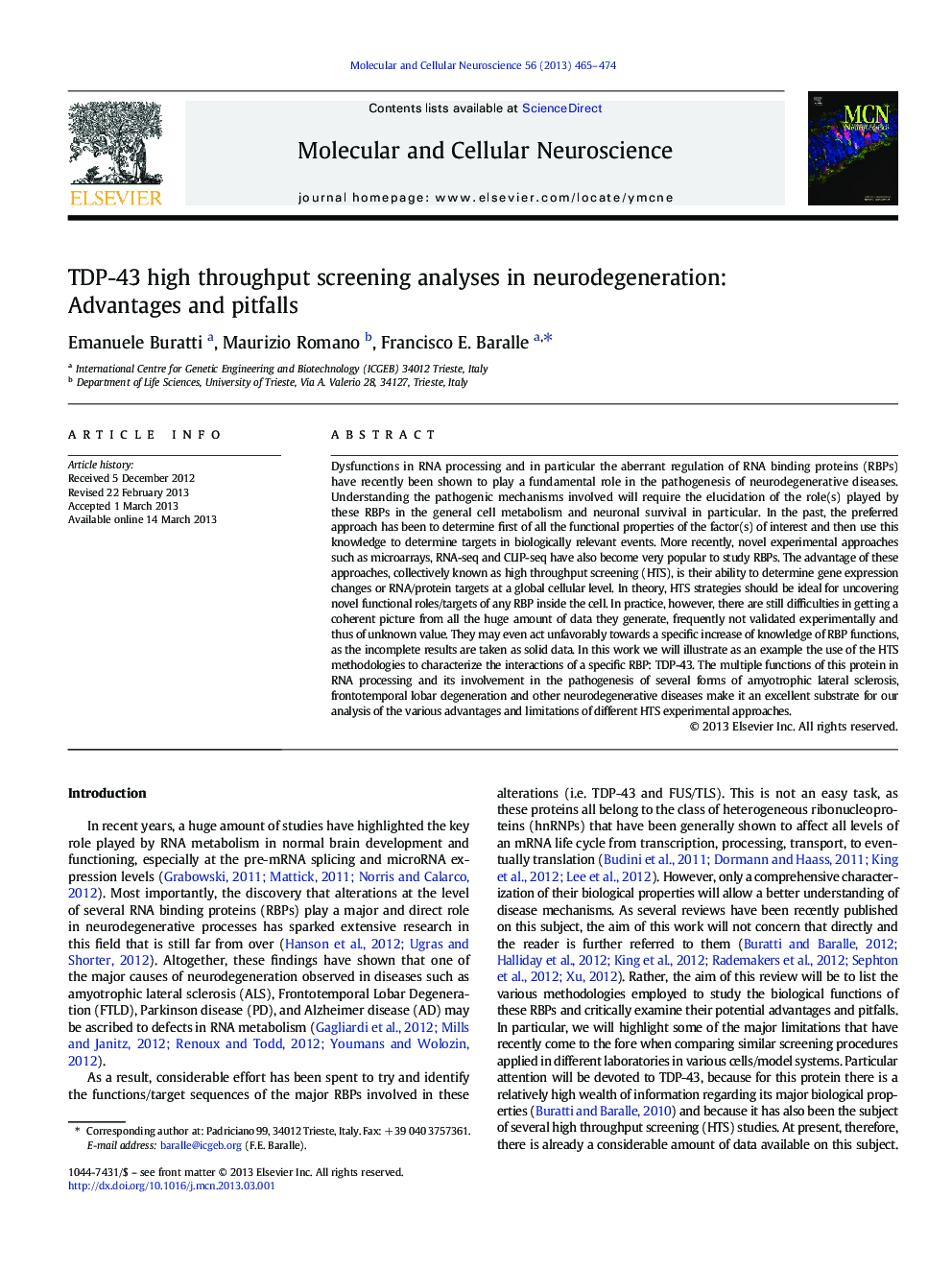| Article ID | Journal | Published Year | Pages | File Type |
|---|---|---|---|---|
| 8478686 | Molecular and Cellular Neuroscience | 2013 | 10 Pages |
Abstract
Dysfunctions in RNA processing and in particular the aberrant regulation of RNA binding proteins (RBPs) have recently been shown to play a fundamental role in the pathogenesis of neurodegenerative diseases. Understanding the pathogenic mechanisms involved will require the elucidation of the role(s) played by these RBPs in the general cell metabolism and neuronal survival in particular. In the past, the preferred approach has been to determine first of all the functional properties of the factor(s) of interest and then use this knowledge to determine targets in biologically relevant events. More recently, novel experimental approaches such as microarrays, RNA-seq and CLIP-seq have also become very popular to study RBPs. The advantage of these approaches, collectively known as high throughput screening (HTS), is their ability to determine gene expression changes or RNA/protein targets at a global cellular level. In theory, HTS strategies should be ideal for uncovering novel functional roles/targets of any RBP inside the cell. In practice, however, there are still difficulties in getting a coherent picture from all the huge amount of data they generate, frequently not validated experimentally and thus of unknown value. They may even act unfavorably towards a specific increase of knowledge of RBP functions, as the incomplete results are taken as solid data. In this work we will illustrate as an example the use of the HTS methodologies to characterize the interactions of a specific RBP: TDP-43. The multiple functions of this protein in RNA processing and its involvement in the pathogenesis of several forms of amyotrophic lateral sclerosis, frontotemporal lobar degeneration and other neurodegenerative diseases make it an excellent substrate for our analysis of the various advantages and limitations of different HTS experimental approaches.
Related Topics
Life Sciences
Biochemistry, Genetics and Molecular Biology
Cell Biology
Authors
Emanuele Buratti, Maurizio Romano, Francisco E. Baralle,
